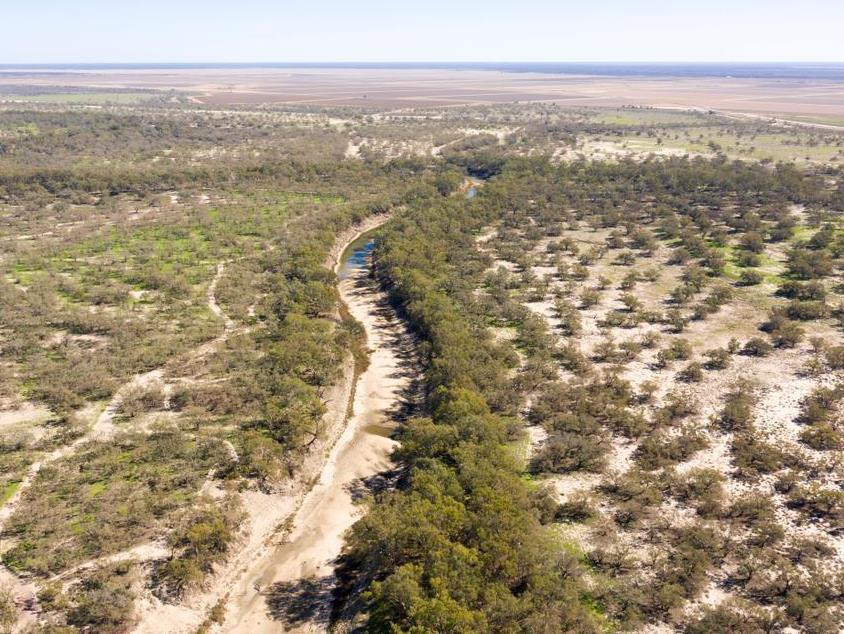Current funding policies sees our small to medium ecosystem on the brink of collapse; image Shutterstock.
Mid-summer, one of the searing images burnt into our collective memory was the millions of dead fish floating in the Darling River at Menindee. Extreme climate conditions, drought, low flows and irrigators pumping too much water upstream were all cited as factors in the devastation.
The Murray Darling Basin Authority (MDBA) manages the operation of the river system which traverses Queensland, South Australia, NSW and Victoria. It’s a mechanism that has been blamed by the Murray Darling Basin Royal Commission for much of the destruction of the natural ecology that constitute the rivers system. Dead fish.
‘The ecology of the small-medium sector is collapsing, and the cause of that collapse can be found upstream.’
Mid-winter, almost two-thirds of the population of Australia’s small-medium arts sector found itself gasping for air on the dry banks of Australia’s river system of public arts funding. A handful of those 250 might survive. Of the 142 companies left to contest the tiny pool of available funds, another cull occurs in November. More dead fish.
One of the persistent plot lines in the narrative of Australia’s public arts funding is the failure to engage in upstream thinking. We tend to be reactive rather than responsive, government-dependent and government-attached rather than independently driven or driven by curiosity. Not often do we ask: why are we in the situation we are in?
Fair enough. Time-poor. Overstretched. Completely exhausted. What we tend to do is address the symptoms of our problems rather than find solutions for them. Today, the ecology of the small-medium sector is collapsing, and the cause of that collapse can be found upstream.
Ecosystem in crisis
Australia’s national arts agency, the Australia Council, controls the flow in the nation’s complex river system of public funding. So, if we were to head upstream in that system, what would we find? The first thing we’d notice is how well a handful of companies are doing. 29 big companies hold 59% of the national subsidy in their own individual, protected reservoirs that they use to irrigate their own fields whilst almost 400 small-time operators receive just 16% of the rest, distributed along a depleted tributary system. The ecosystem is in crisis, out of balance, oversupplying one end of the food chain at the expense of the other. Why is that the case?
There are a number of reasons.
The first can be found in the legislative arena. The Cultural Engagement Framework (CEF) set down in The Australia Council Act 2013 insists that “the organisation’s vision, priorities and processes recognise and reflect diversity”. Those priorities are First Nations peoples; children and young people; cultural diversity; older people; people with disability; regional and remote Australia.
The Australia Council’s Major Performing Arts (MPA) Framework which protects these 29 big companies enshrines the CEF priorities. Perversely, only one is a First Nations company. None are led by or cater specifically to people with disabilities or young people. Nor are any located in, or orient their core work to, regional and remote Australia.
‘From 1990 to 2010, direct funding for individual artists in Australia fell by a third. By 2016, the number of Australia Council grants to individual artists and projects had decreased 70% on the previous two years.’
Those 29 companies do not reflect the diversity that is the Australia Council’s obligation under its governing legislation. These priorities are almost exclusively met by the small-medium and independent sector. The ones currently gasping for air. Something is out of whack.
In 2014, a year in which it received just over a third of the Australia Council’s grants budget (compared to just under two-thirds for MPA organisations) this sector attracted over double the MPA organisations’ total audience – 6.87 million as against 3.37 million.
Economic data tabled at the 2015 Senate Inquiry into the Arts noted that MPA organisations collectively received a subsidy of $31.50 per audience member whereas the small-to-medium and independent sector received a subsidy of $3.36 per audience member. In other words, the MPA organisations received nine times the subsidy of the small-to-medium companies which received a third of the funding whilst delivering twice the audience numbers. Something is broken.
‘Artists should be seen and not heard’
The narrative that is used to explain these circumstances centres on the 2015 intervention by then Federal Arts Minister, Georg Brandis, who pulled $104 million out of the Australia Council to establish a new stream of Ministry funding, born as the National Program for Excellence in the Arts then adopted out as Catalyst by his successor, Mitch Fifield. Having been intimately involved in the resistance to Brandis’ incursion, I understand the significance of the actions of the many involved. However, this narrative stops us ‘looking upstream’, and asking why Brandis did what he did.
Sure, it was payback for the Artist’s Boycott of the 2014 Sydney Biennale but tied up in that childish response is the very real truth that for him, artists should be seen and not heard. Which is why he (and Turnbull) reacted so viscerally to their actions. Real Australian culture constitutes major organisations and cultural institutions. Not living, working artists. They are lesser. They deserve less. This is enshrined in the MPA Framework, both a symbol of, and a mechanism for, discriminatory values that determine public arts funding in Australia.
Individual artists bearing the brunt
This is demonstrated potently in the following statistic. From 1990 to 2010, direct funding for individual artists in Australia fell by a third. By 2016, the number of Australia Council grants to individual artists and projects had decreased 70% on the previous two years. The Australia Council’s own research has tracked reductions in artist-populations and the ever-increasing precarity of the artist’s life. The fish are dying.
The reportage on the MDBA Commission’s findings makes for interesting reading. It uses language that is strikingly similar to that used to describe the devastation wrought on the small-medium and independent arts sector. One independent MP described part of the Basin’s river system as on the ‘very brink of no return’.
For me, the MPA Framework is Australian culture’s equivalent of the MDBA. Like that mechanism, the Framework delivers to the heavy-end of industry but fails to acknowledge the extraordinary changes to the arts climate in the last two decades.
These changes have occurred through legislation, in audience behaviour, the up-sizing of the cultural economy and in artform development where funding of the performing arts is still privileged over visual arts, an imbalance that does not reflect significant changes to contemporary arts practice in which artform distinction has given way to a blurring of, and between, artforms. Current policy reflects artistic practices of a pre-digital world.
All of these changes are counter-factual to the very existence of the MPA Framework, which speaks of a past age. Subsequently, the small-medium and independent sector that is the centre of Australia’s arts ecosystem, on which Australian culture depends for its productivity, efficiency and international reputation, is on the ‘very brink of no-return’. This collapse is a corollary of the continuation of the MPA Framework.
Financial discrimination
If you’re one of the 250 companies currently gasping for air and having conversations with the Australia Council then you might ask pertinent questions in relation to the agency’s historical complicity in this extraordinary exemplar of sustained, institutionalised, financial discrimination. If you want to draw a straight line between your survival and the current state of national arts funding, then begin at the heart of the MPA Framework.
If you’re an advocacy body speaking on behalf of the small-medium sector, please don’t seek an increase in funding to the Australia Council because you will only be advocating the continuation of this discrimination. Do the math. For every dollar you advocate, only 16 cents will end up in the pockets of your constituents. If you’re advocating for an extra $7 million to the small-medium sector, that’s just a band-aid on a bleeding sore.
Asking for more money misses the point. Aside from the (un)likelihood of that happening, the fact is Australia’s national arts sector is not that badly funded. Having worked internationally for almost 30 years, that is a view consistently communicated by many international colleagues. The problem isn’t financial, it’s structural. The problem is the crippling, discriminatory distribution of those funds.
The only way to save this generation of artists and succeeding generations is – using the MDBA analogy – ‘to re-allocate more water from irrigation to the environment’.
How to do that?
Well, unlike the MDBA, there is a single mechanism that oversees the Australia Council’s MPA Framework called the Meeting of Cultural Ministers (MCM), a forum that requires consensus for national action from all State and Territories Arts Ministers. Historically, there has been resistance within advocacy circles to challenge the MPA Framework because the MCM has been considered to be instrumentally impermeable. Surprise, surprise when in May this year, a few weeks before the Federal Election, three State Ministers publicly disavowed a revised MPA Framework proposed by the artless Mitch Fifield. My understanding is they are not alone.
Later this year, the MCM meets again.
Ask for a meeting and advocate
If you’re an independent artist, if you lead or represent a small-medium arts company, then the task here is simple. Contact your Minister, ask for a meeting, sit down with them, advocate for either a profound reduction of the funds allocated to the MPAs through the Framework or an elimination of the Framework altogether – and the diversion of those funds directly to your sector.
There are two parts to your advocacy.
The sector-wide arguments outlined above are compelling around sustained, financial discrimination, artist and sector sustainability, agency priorities and anachronistic readings of cultural production. They all contest the validity, fairness, impact and appropriateness of the MPA Framework in current cultural conditions within a national public arts funding paradigm.
The state-wide arguments are more complex and individuated.
According to this report in ArtsHub, Queensland and WA Ministers expressed legitimate ongoing concerns about the funding inequity in the implementation of the MPA Framework. Victoria’s issues concern the mechanism itself being outdated and exclusive.
But there’s a deeper story at play here that compromises each State’s capacity to build and maintain a small-medium and independent sector – decreasing retention rates of artist-populations across the country and artist-mobility. Mid-career and senior artists are opting out altogether with attrition rates stripping the culture of a whole generation of knowledge and practice.
Shift towards inclusion
And artists are leaving where they live in the hope of finding greener pastures elsewhere. For many, a primary destination is Victoria, whose arts policy and ecology is perceived to be comparatively progressive to other States, such as NSW and South Australia. But this makes the life of an artist there ever more precarious as there are no financial offsets to accommodate the influx of interstate artists.
Success rates in Creative Victoria’s artist and project funding schemes, already at 20%, will decrease further, placing downward pressure on the Victorian arts community. This year it’s Victoria, next year Queensland and after that, somewhere else. Localised conditions can contribute to such movement of artists across borders, but the main factor is the failure of national leadership to create a workable, fair and federal approach to funding the small-medium and independent sector.
The national arts ecology is a complex beast that is currently defined by institutionalised, financial discrimination which has knock-on effects in each and every State and Territory. Correct this, and not only the day-to-day reality of the Australian arts scene finds a balance but the values that govern the ecology shift towards inclusion, fairness, equity and the demonstrable opportunity of achieving a higher level of artistic production.
Make the call.
This article was previously published in The Daily Review. Read the full article: On arts and irrigation funding.





